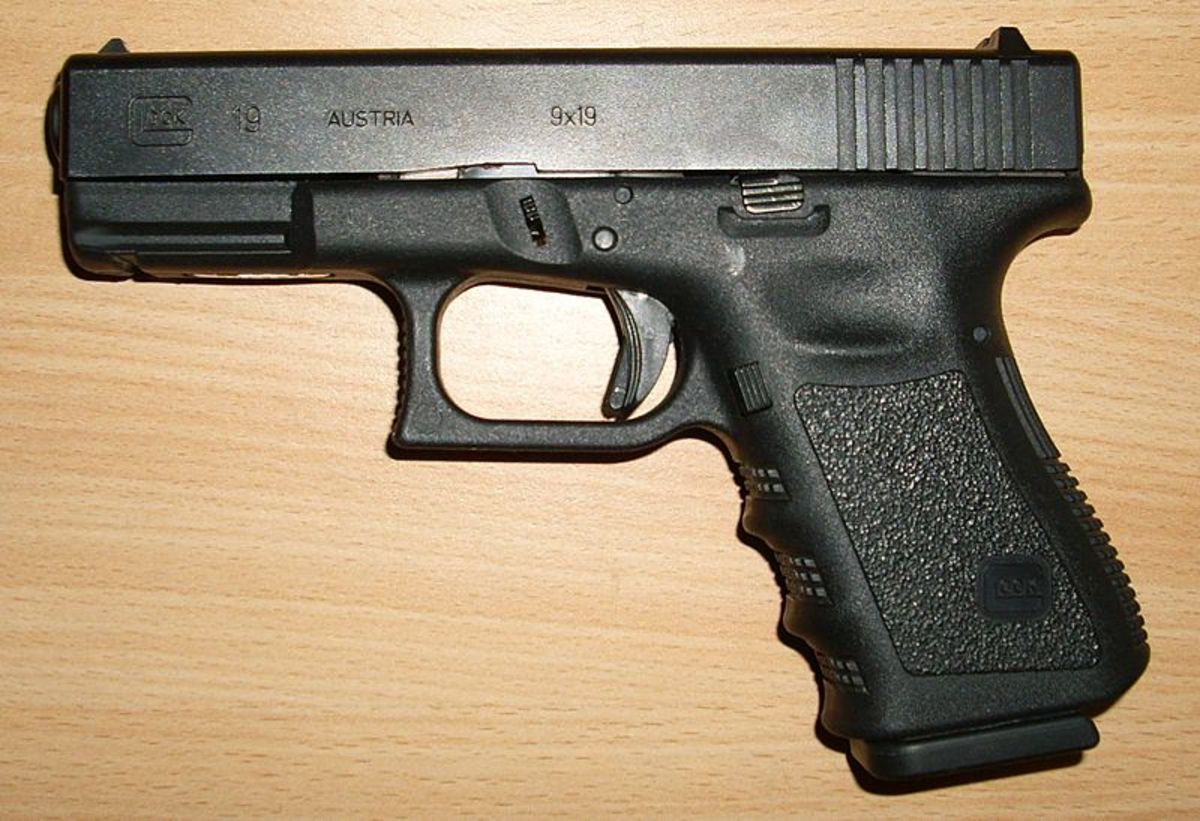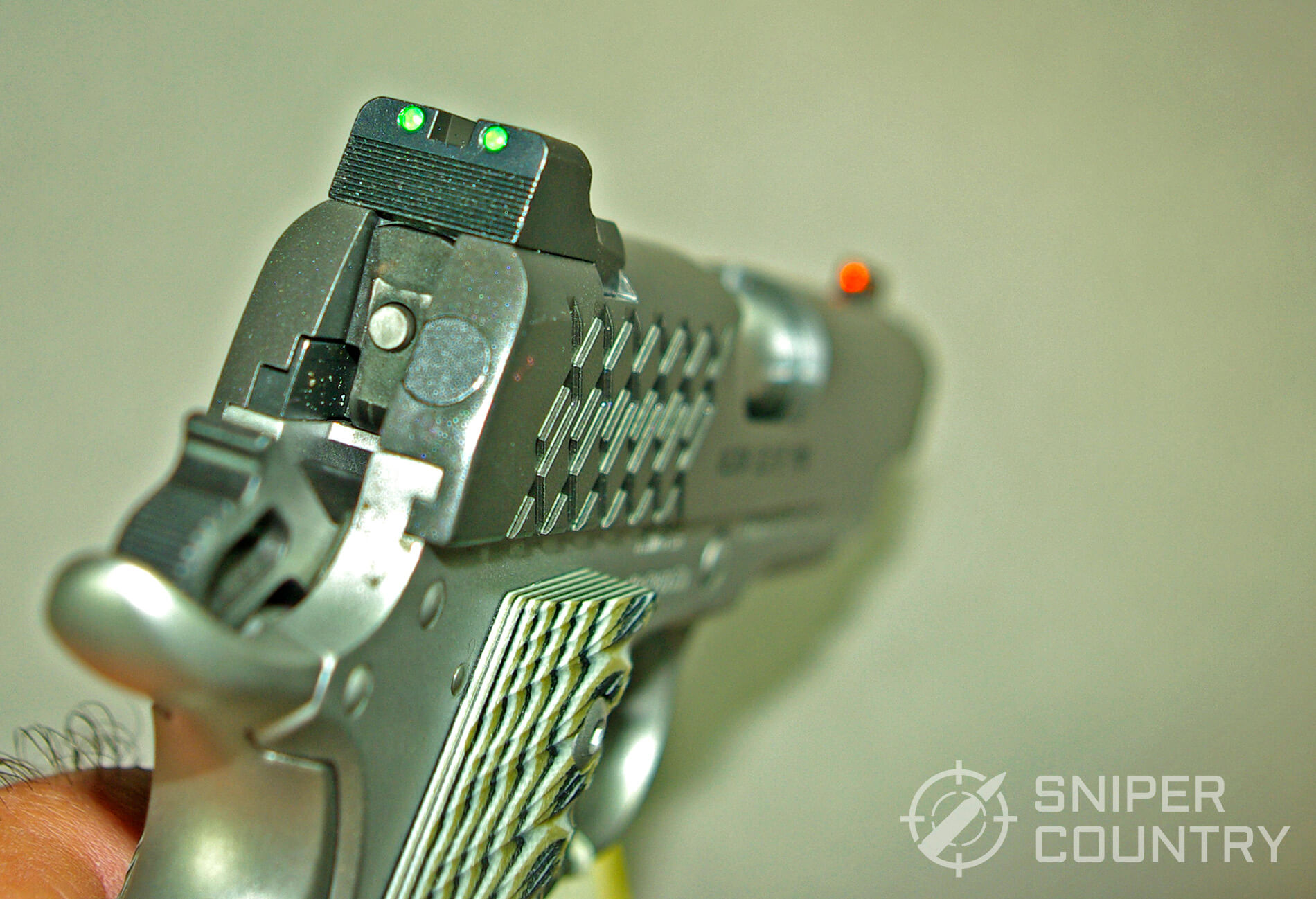Does Glock Make A 1911 - Comparison of Glock vs 1911 pistols. What are the main differences and why would you choose one over the other for your protection?
For more than a century, two weapons have set the bar for semi-automatic handguns - the Colt Model 1911 and the Glock 17. Although these two iconic pistols were designed more than 70 years apart, they have dominated the work and self-defense circles. same for decades. To this day, the Glock vs. 1911s rule for good reason. Pistols are often the clear frontrunners in an industry filled with quality guns.
Does Glock Make A 1911

Not only are these two popular pistols insanely popular, they also have the most loyal, die-hard fans in the world. Like good fans, these gun enthusiasts discuss their interests on social media, online forums, and local gun lists on a regular basis. Indeed, the Glock vs. The 1911 showdown has become one of the hottest debates in the gun world. This is a rivalry big enough to put Coke/Pepsi, Ford/Chevy and Duke/Carolina to shame.
Review: Magnum Research Mr1911 .45 Acp And 10mm Auto
Full disclosure: While I try hard not to be a frothing-at-the-mouth Glock fangirl, I'm not biased. While I think hitting targets with a 1911 is a great way to spend a broad day, you'll find me with a Glock 19 on my hip every other day of the week. I also drink Pepsi, drive a Chevy, and have invested heavily in a top-notch UNC education for my oldest daughter (which means I get to ride Carolina while talking to Duke athletics).
The year 1911 has a long and rich history. Designed by the legendary John Moses Browning, the 1911 was born in response to the US military's need for a more effective sidearm. The first weapon issued by the army was the .38 revolver, which proved woefully inadequate in the close encounters of the Philippine-American War.
Ultimately, the .45 ACP cartridge was chosen to take on the opiate-crazed indigenous tribes of the conflict. Several pistols for the new hard-hitting cartridge competed for military contracts, but Browning's autoloading pistol, the Colt Model 1911, came out on top. It was officially adopted by the United States Army just before World War I. The 1911 has been synonymous with the .45 ACP ever since.
The US continued to use the 1911 through World War II, Korea, Vietnam and most of the Cold War. It was eventually replaced by the current issue Beretta M9 in 1985. However, due to its proven history and great popularity, the 1911 did not die out completely. Most of America's fighting forces continue to go into harm's way with the Colt 1911 by their side.
Review: The Glock 17m Duty Pistol
Glock has a completely different story. Where the 1911 was designed by the most famous gun designer of all time, the Glock was made by a simple curtain rod manufacturer. The company's founder and lead engineer, Gaston Glock, had no experience designing firearms. What he did have was an extensive background in advanced synthetic polymers. He used that expertise to develop the world's first commercially successful line of polymer guns.
In the early 1980s, Glock was very dissatisfied with the gun options on the market. He borrowed techniques from earlier pistol designs and combined them with materials and modern manufacturing methods to produce the now iconic Glock 17.
Glock was able to create a side sleeve that was more durable, reliable and easier to use than other handguns of the time. It was incredibly light and had a capacity of 17 magazines, which was more than its peers. These features won Glock a contract with the Austrian army in 1982.

Today, more than two-thirds of American police officers use the Glock 17 as their standard weapon. In addition, the G17's smaller and more compact sibling, the Glock 19, is arguably the best concealed carry weapon in the world.
Does It Even Make Sense To Compare The Glock 17 And 1911a1?
Most 1911 groups like to brag about how the 1911 "won two world wars". Since their development, both pistols have served in many military conflicts around the world. While the 1911 is certainly the most worn weapon in war, it has more war time in its history because it has been around longer than the Glock.
Without combat experience, how do these two popular guns compare in the civilian world? Let's take a look at how the Glock and 1911 work for self-defense.
The main difference between the Glock and the 1911 is their construction. The 1911 is made of steel, while the Glock is made of a modern, nylon-filled polymer. 1911 loyalists often deride Glock pistols for being "made of plastic."
But the high-performance, nylon-based polymer developed by Gaston Glock (called Polymer 2) is not the same as cheap, thin, flexible plastic. Polymer 2 is not only lightweight (a fully loaded .45 caliber Glock 21 actually weighs less than an unloaded steel frame 1911), the polymer is also rustproof, corrosion resistant and low temperature sensitive. You can handle a polymer tool without gloves in freezing temperatures as easily as you can in the scorching heat of a South Alabama summer afternoon. Also, extreme temperatures have little or no effect on device performance.
Shooting Review: The Glock 19 Gen 5
Glock uses some metal parts in their guns. But they use ferritic carburizing to protect these metal parts. Combined with Glock's signature polymer frame, their construction makes them resistant to corrosion. They can work reliably in some of the world's harshest conditions.
Proponents of the 1911 often refer to the weapon's "brutal power." Knockdown power is a bit of an ethereal concept, but 1911 fans are probably referring to the power of the .45 caliber.
Honestly, 45 ACP ammo has no more "power" than 9mm Luger. Before you blow up the comment section, let me explain. It's all about physics. The equation for kinetic energy (or "force") is:

For our purposes, m is the mass of the projectile and v2 is the squared velocity of the projectile. (Don't worry. I'm not going to do any math. That would be rude.)
Thumb Safety Glock
Thanks to the magic of math, we know that the 9mm actually has more kinetic energy than the .45 ACP. This may seem counterintuitive, but I promise it's true. Although the 9mm projectile is lighter, it travels at a faster speed, resulting in more kinetic energy when it hits the target.
If we're talking raw power, the 9mm wins. However, there is much more to stopping a lethal threat than the kinetic energy of a projectile. Finally, the shooting range is where the real "stopping power" lies.
Taking out the 1911's "high" knockdown power is mostly a way to justify a seven-round magazine. Again, the argument is wrong because shooters can trade their Glock 19 for a Glock 21, 30, or 36… all chambered in .45 ACP.
Colt 1911 and Glock pistols are standard handguns designed more for reliability than accuracy. If you want a tool that can handle snow, rain, mud and dust without skipping a beat, any of these pistols are up to the job.
The Hoss Custom 1911 Pistol For Sale
Both guns are naturally accurate and shoot comparable MOA at 25 yards. But sometimes shooters have a hard time milking the accuracy of one gun or another.
Many 1911 fans offer harsh criticism of Glock's factory trigger. Right out of the box, Glock's trigger tends to be spongy and a little on the hard side. In comparison, what was started in 1911 is clear and precise. This small difference in trigger pull can have big consequences for putting the shot down. When it comes to accurate photography, sharp beats are mush every day of the week.
But the Glock trigger is built that way on purpose. "Safe Action" is a passive security system. When you pull the trigger, three different safety functions are fired in sequence. In other words, there's a lot going on when you pull the Glock trigger.
Glock's trigger is certainly not the same grade, but you don't need match grade accuracy for self defense. Hitting a man-sized target at a defensive range (especially when the shooter is under duress) does not require precise accuracy or arming the competition.
The Glock 17 Pistol's Coolest Movie Moments
While you can always upgrade your trigger (and many Glock owners do), the stock trigger on a 1911 is always good and works a little better for accurate shooting than Glocks. However, both of these causes are accurate enough to shoot at close range, which is what you need in a self-defense weapon.
Too much recoil can have negative effects on the shooter's accuracy, especially on those difficult follow-up shots. The solid weight of the 1911 helps absorb some of the heavy .45 recoil, making it easier for most shooters to handle.
The 9mm recoil of the Glock 17 is mild. But when comparing apples to apples, the fully loaded Glock 21 (chambered in .45 ACP) weighs almost 10 ounces less than the loaded 1911 (38.8 ounces vs. 48 ounces). If we look at weight alone, a heavier 1911 should produce less recoil, allowing for faster shooting.
How to make a lego glock, how to make a paper glock, how much does a glock 26 cost, how much does a glock 19 cost, make a glock full auto, how to make a cardboard glock, does glock still make gen 3, how much does a glock 30 cost, how does a glock work, does glock make a 22, does the glock 19 have a safety, glock versus 1911
